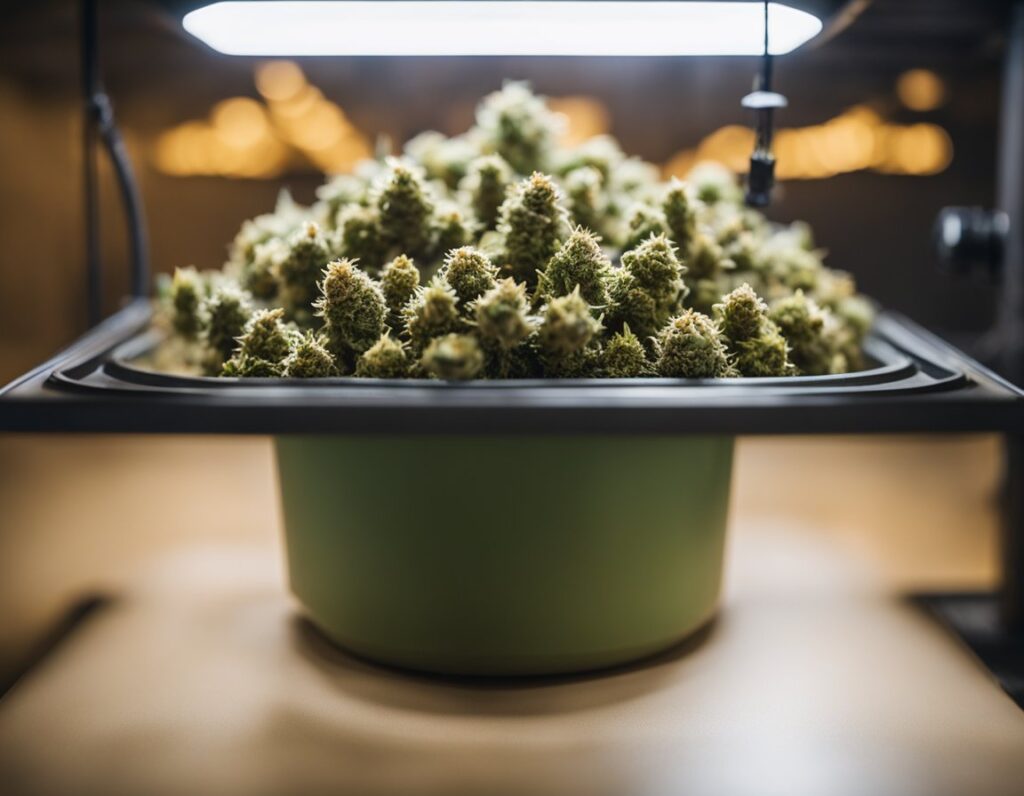
You need to grasp the crucial steps of drying and curing marijuana seeds in Vancouver to achieve optimal potency and flavor. This process significantly influences the terpene profile and overall quality of your final product.
Proper drying and curing are essential for preserving trichomes, which contain cannabinoids and terpenes. If cannabis is dried too quickly, it can lead to a harsh smoke and loss of flavor. Ideally, you should aim for a moisture content of around 10-15% in the buds to maintain quality.
Curing allows oxygen to interact with the buds, enabling the breakdown of chlorophyll, which enhances taste and smoothness. During this stage, the buds are stored in airtight containers, promoting a balanced environment for chemical processes that refine the cannabis. The longer the curing period, the richer the flavor profile becomes.
Drying is the initial phase, involving the removal of excess moisture after harvest. This usually takes several days, during which you should monitor temperature and humidity closely. Ideal conditions are around 60-70°F with 50-60% humidity to prevent mold.
Curing follows drying and typically lasts anywhere from a few weeks to several months. During curing, stored buds should be opened periodically to release excess moisture and allow fresh air exchange. This process is vital for enhancing overall potency, flavor, and aroma, as it encourages the optimal development of terpenes and cannabinoids. Understanding these phases will help you produce a quality end product.

Creating a suitable drying room is essential for achieving optimal cannabis quality. Focus on location, humidity, temperature, and airflow to establish a controlled environment that facilitates proper drying and curing for your drying curing cannabis in Vancouver.
Select a space that is cool, dark, and away from direct sunlight. Ideally, it should maintain a stable temperature between 60°F and 70°F. An area that isn’t prone to excessive foot traffic will help minimize disturbances during the drying process.
Ensure the chosen location is well-ventilated. Rooms with windows can be beneficial but avoid open air exposure. A basement or a dedicated drying tent often provides the best conditions in humid climates like Vancouver.
Maintaining precise humidity levels is crucial. Aim for ideals of 45% to 55% relative humidity. This range prevents mold growth while allowing for adequate moisture evaporation from the buds.
Temperature control is equally important. Fluctuations can lead to uneven drying. Use thermometers and hygrometers to monitor conditions accurately. Consistency aids in achieving the desired potency and flavor of the final product.
In a humid climate, dehumidifiers are essential for reducing moisture levels. Choose a unit that can handle the square footage of your drying area. Aim to set it to maintain the humidity levels mentioned above.
If your drying room is too dry, a humidifier may be necessary. This balance ensures a controlled drying environment. Periodically check the equipment to ensure it functions correctly and make adjustments as needed.
Airflow is vital in any drying room. It helps in evenly circulating air around the hanging buds, which promotes uniform drying. Use fans positioned strategically to avoid direct airflow on the buds, preventing them from becoming too dry or crispy.
Ensure your drying room is not completely sealed. A slight air exchange helps mitigate the risk of mold. Monitor airflow with small oscillating fans if needed, ensuring they run on low speed for gentle circulation.
By focusing on these aspects, you can create an effective drying room tailored for cannabis cultivation in Vancouver’s humid climate.
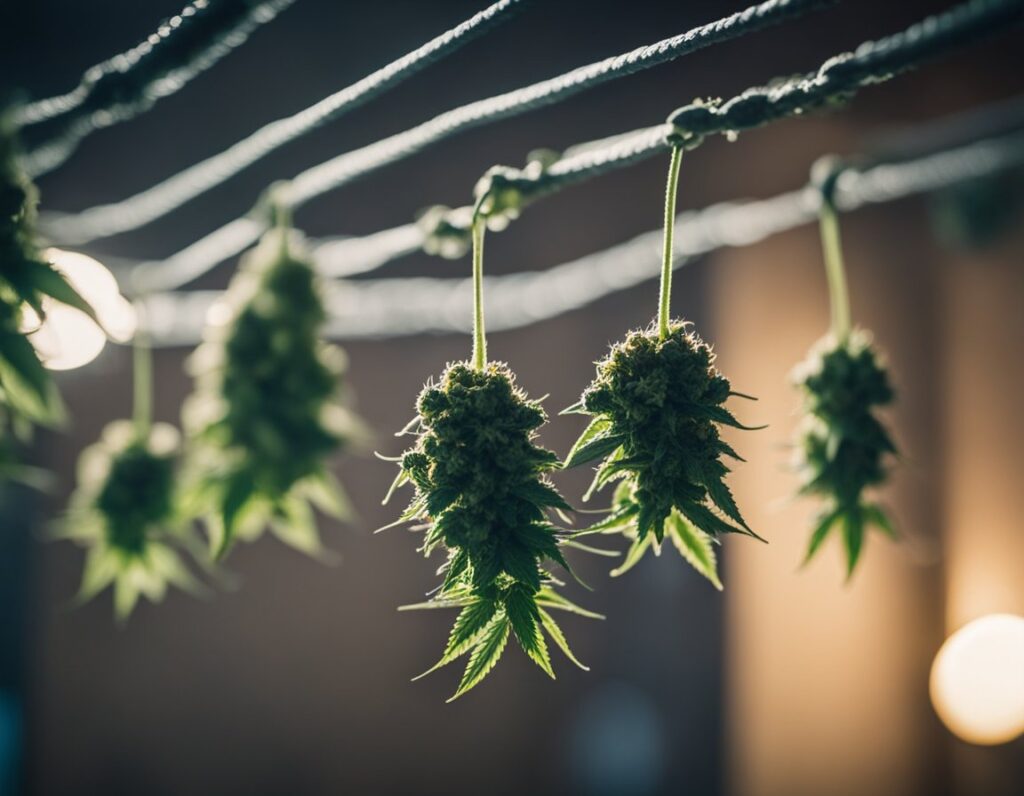
In a humid climate like Vancouver’s, preventing mold and mildew during the drying phase of cannabis is crucial. By actively managing humidity levels and employing effective storage methods, you can ensure the quality of your harvest remains high.
Start by consistently monitoring your drying environment. High humidity levels can foster mold growth, particularly botrytis, which thrives in moisture-laden conditions. Use a hygrometer to measure the humidity, aiming for levels between 45% and 55% during drying.
If you detect humidity above this range, consider utilizing dehumidifiers or air conditioning to reduce moisture. Increasing air circulation is also essential; ensure fans are appropriately placed to foster airflow around your drying cannabis. Additionally, keep the drying space as clean as possible to minimize potential spores.
A hygrometer is an essential tool for gauging humidity levels accurately. Choose a reliable model to provide real-time data about your environment. This enables quick adjustments if humidity levels start to rise.
Once the cannabis is dried, using airtight containers is vital for long-term storage. These containers prevent moisture ingress and maintain consistent humidity. You can use two-way humidity regulator packets, like Integra Boost, within these containers to manage humidity effectively. This added control helps you avoid conditions that lead to mold and ensures your cannabis stays fresh and flavorful.
Proper storage practices are key to warding off mold and mildew. After drying, ensure your cannabis is stored in a dark, cool place. Light and heat can contribute to mold growth, so choose storage areas wisely.
Implement a system for “burping” your jars regularly, especially in the first week after curing. This involves briefly opening the jars to allow fresh air in, which helps release excess moisture. Gradually reduce the frequency of burping to once or twice daily as the cannabis stabilizes.
Adhering to these practices will significantly reduce the likelihood of mold and mildew, preserving the quality of your cannabis throughout the drying and curing process.
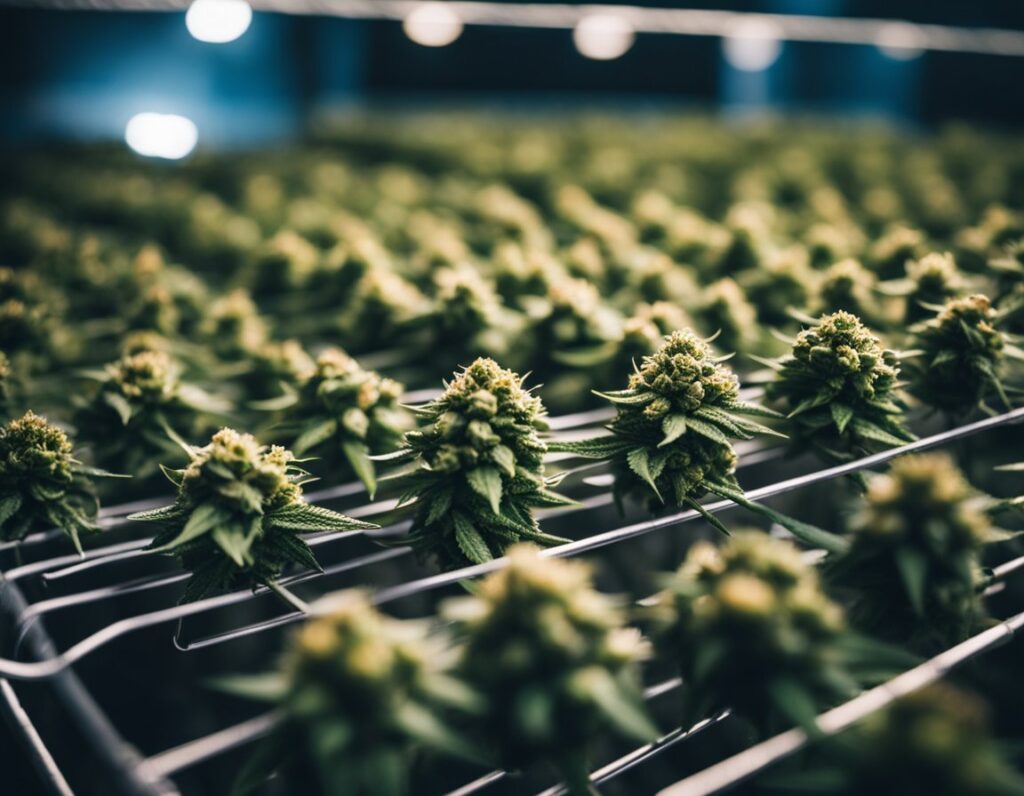
Trimming your cannabis buds is a vital step before drying, affecting the overall quality and potency of the final product. You have two primary methods to choose from: dry trimming and wet trimming. Each has its benefits and techniques that can help you achieve the best results.
Dry trimming involves cutting the buds from the plant before they are dried. This technique allows for easier handling since the buds are less sticky. It also minimizes the risk of mold, especially in humid climates like Vancouver.
Wet trimming is done immediately after harvesting. You trim the buds while they are still moist, which allows for finer detail in trimming. This method can enhance the flavor profile, as the sugars are preserved better during the drying process.
When trimming cannabis, there are several techniques that can improve the appearance and quality of your buds. The two main techniques include:
Using these techniques properly will result in well-prepped buds ready for drying, essential for maintaining quality as they dry.
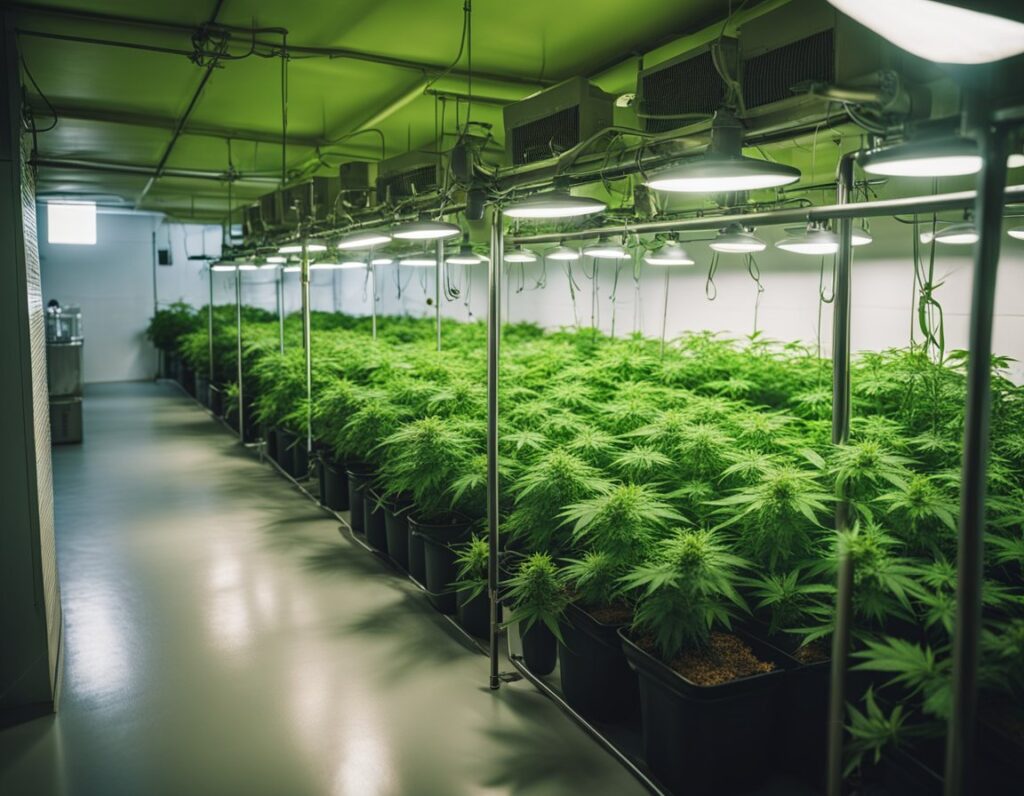
In Vancouver’s humid climate, using advanced drying techniques can significantly improve the quality of your cannabis. Two effective methods include utilizing drying racks in controlled environments and exploring freeze drying options.
Employing drying racks can optimize space and airflow during the drying process. You can set up the drying racks inside a grow tent, which helps regulate temperature and humidity levels.
Key tips:
Monitor the drying timeline closely; typically, this process should last 7 to 14 days. Check the buds regularly to ensure they are drying evenly and adjust environmental controls accordingly.
Freeze drying is an advanced method gaining traction for preserving terpenes and cannabinoids effectively. This technique minimizes the drying time significantly, completing the entire process in approximately 11 to 14 hours, depending on the strain.
Essential aspects:
While freeze drying is faster, it requires equipment investment and careful handling during the freeze-drying process to achieve optimal results. Adjust the machine settings based on the specific strain for best outcomes.
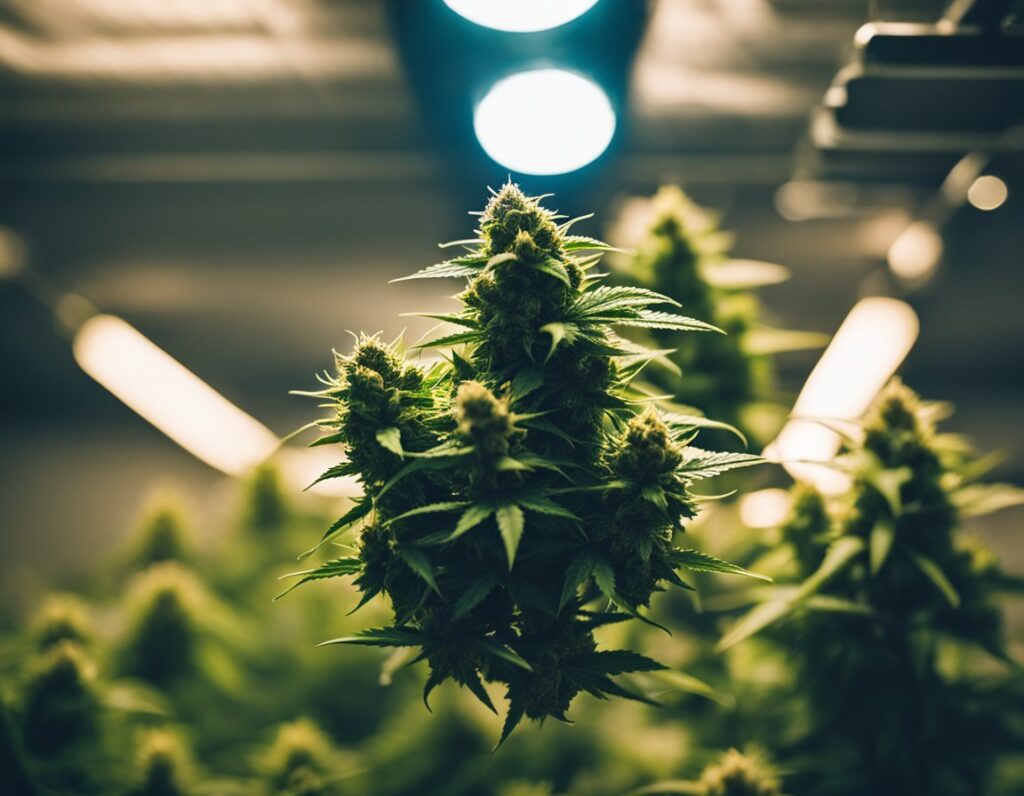
Curing cannabis is a crucial step that enhances its flavor, aroma, and shelf life. Proper curing helps to preserve cannabinoids and terpenes, contributing to a smoother smoke and overall quality.
To achieve effective cannabis curing, focus on creating an ideal environment. Temperature and humidity play pivotal roles; you should maintain a temperature between 60-70°F (15-21°C) with relative humidity around 55-62%.
Curing containers like mason jars are a popular choice. They allow for proper airflow while controlling moisture levels. Consider using turkey bags for larger batches as they can accommodate bulk without excess moisture loss.
Ensure you fill these containers only about 70-80% full. This leaves space for air, which aids in even curing. Regularly check your jars, opening them for fresh air exchange and assessing moisture.
The duration for curing cannabis varies based on personal preference and desired quality. A minimum curing time of 2-4 weeks can significantly improve smoke smoothness and flavor.
For optimal results, consider curing for 4-8 weeks. This extended period allows for gradual breakdown of chlorophyll, resulting in a cleaner taste. Use a step-by-step guide to monitor moisture and ensure consistent quality.
During curing, maintain vigilance. Check for any signs of mold or excessive moisture. If your cannabis feels too wet, remove it from the jar, allow it to air out, and then return it to the container after a few hours. This proactive approach can extend shelf life and enhance the characteristics of your final product.
Navigating the drying and curing process in Vancouver’s humid climate poses unique challenges. Understanding optimal conditions, methods to control humidity, and the signs of proper drying can enhance your success.
For effective curing, aim for a humidity level between 58% and 62%. This range promotes proper moisture retention while preventing mold growth. Use a hygrometer to monitor levels closely during the curing process.
Desiccants can be useful in absorbing excess moisture during the drying process. DampRid and similar products may help stabilize humidity levels, but make sure they do not come into direct contact with your cannabis to avoid altering its properties.
Curing at 70% humidity significantly increases the risk of mold and mildew. To mitigate this, you can improve airflow in your curing container, regularly check your cannabis for signs of moisture, and consider using desiccants to manage humidity levels effectively.
Your cannabis is ready for curing when the stems snap rather than bend. The buds should feel dry to the touch, with a slight moisture retained in the center. This ensures optimal conditions for curing without inviting mold.
While it is possible to dry cannabis at 80 degrees Fahrenheit, it is advisable to monitor closely. High temperatures accelerate drying and can lead to degradation of terpenes. Maintain good airflow and check regularly to prevent overheating or uneven drying.
We ship and deliver world wide via USPS and various couriers.
We offer a wide range of secure and anonymous online payment options.
We care about you, our customer. Please contact us with any questions or concerns.
Find out more about the benefits of being a loyal and regular customer.
WE ARE EVERY GROWERS ONE STOP SHOP TO ACQUIRE PREMIUM CANNABIS SEEDS FOR SALE IN THE USA, CANADA AND AUSTRALIA

Farmers Lab Seeds 2024, | All Right Reserved
Seeds are sold as novelty items, souvenirs, and collectibles. They contain 0% THC. We encourage our customers to check the legislation in their Country, State, Province, and Municipality prior to purchasing items from our store. We do not provide growing information.
All seeds are sold as hemp, and lab tested under 0.3% THC. This product is not for use by or sale to persons under the age of 21. This product should be used only as directed on the label. It should not be used if you are pregnant or nursing. Consult with a physician before use if you have a serious medical condition or use prescription medications. A Doctor’s advice should be sought before using this and any supplemental dietary product. All trademarks and copyrights are property of their respective owners and are not affiliated with nor do they endorse this product.
These statements have not been evaluated by the FDA. This product is not intended to diagnose, treat, cure or prevent any disease. Individual weight loss results will vary. By using this site, you agree to follow the Privacy Policy and all Terms & Conditions printed on this site. Void Where Prohibited by Law.